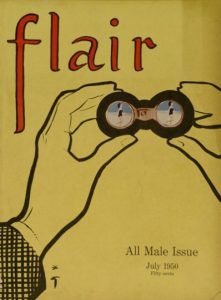I wrote a piece for the Ethos Review, recently founded here at UNC, on the significance of John Steinbeck’s Grapes of Wrath, which was published 75 years ago.
Web site of Professor Heidi Kim, Dept. of English and Comparative Literature
I wrote a piece for the Ethos Review, recently founded here at UNC, on the significance of John Steinbeck’s Grapes of Wrath, which was published 75 years ago.
 My post on a little gem of a Steinbeck finding at the UT Austin Harry Ransom Center (a true treasure trove of literary materials) is up here.
My post on a little gem of a Steinbeck finding at the UT Austin Harry Ransom Center (a true treasure trove of literary materials) is up here.
As with so many male authors of the period, Steinbeck’s depiction of women has often been critiqued. Here, he encapsulates his views on women to the point of self-caricature. Flair was a short-lived, very high-art magazine which had a well received run in the 1950s.
“The Foreigner in Yoknapatawpha: Rethinking race in the global South” was published in a Philological Quarterly special issue: The New Southern Studies and the New Modernist Studies in Spring & Summer 2012 (90(2&3): 199-228).
Though it’s not a well-known fact, there was a small but very visible Chinese minority in Mississippi throughout the years of Faulkner’s active writing career, and one that came to national fame in a Supreme Court case about whether they should be put in white or black public schools. When Joe Christmas first arrives in Jefferson in Light in August, a sulky, light-colored man with no money and city clothing, the townsfolk label him a “foreigner.” His name and indefinable appearance allow him to exist in an undefined limbo between black and white until he transgresses social boundaries in both directions, unlike the lone Chinese man in The Town and the Chinese population in real life. Starting with the definition of foreignness in Light in August and reading through Intruder in the Dust (1948) and The Town (1957), I examine the role of the the Chinese as the most visible exponents of the foreign as a new party in Faulkner’s tortured generations of Southern history, comparing his surprisingly elastic social structures with the contemporaneous restrictions on the growing Chinese population in legal and social arenas. Gong Lum v. Rice (1927), the landmark Supreme Court case that turned away from the singular consideration of African Americans as the “colored race” to define the Chinese as one of the “colored races” resonates with the white supremacist in Light who asserts superiority over “any and all other races.” Ike McCaslin, one of Faulkner’s characters, voices hatred of the “spawning” and “breeding” Chinese, among other races, but even Faulkner’s extension of racial hysteria over miscegenation to include the Chinese who were moving into the Delta offers, as well, the possibility of eventual social intermixture and inclusion in his American South.
This article won PQ‘s annual Hardin Craig Prize for the article that has best advanced scholarship in its field.
Link here (requires Chadwyck subscription).
“The Francophone Uncle Tom’s Cabin” was published in the Little-Known Documents section of PMLA (Proceedings of the Modern Language Association) in May 2010 (125(3):798-815).
Charles Testut, a French-born Creole radical publisher and writer, wrote an epic novel detailing the adventures and eventual triumph of a married couple of Guadeloupean slaves illegally sold to the United States. It bears clear resemblances to Harriet Beecher Stowe’s Uncle Tom’s Cabin, but with Testut’s politics and his heavy French Romantic influence (by writers such as Alexandre Dumas), it is much more violent, sexual, and openly political a novel, with several diatribes against Catholic zealots, Louisiana judicial corruption, and racial prejudice. Though it was written before the Civil War, Testut was only able to publish the novel in 1872.
Article link here (requires subscription or pay per article). More information and an excerpt are available here.
© 2024 Heidi Kim
Theme by Anders Noren — Up ↑